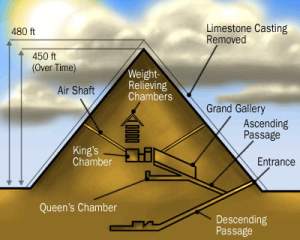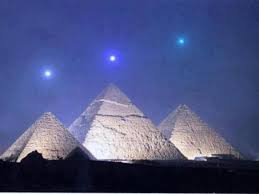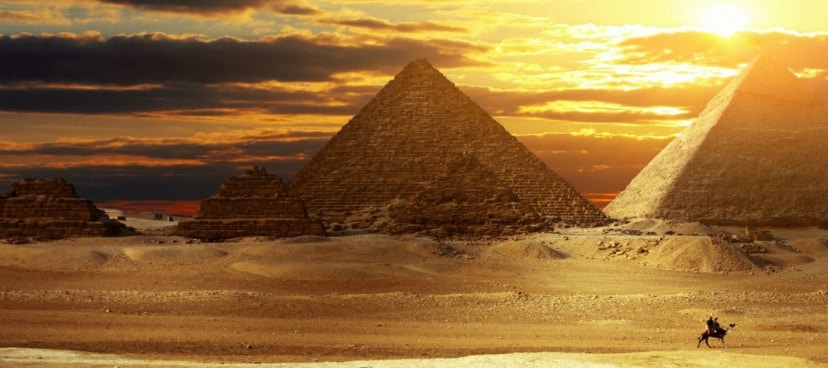The Shadow of Nemesis-2; Tales of Zahi Hawass, Chaigidiel & Satharial
(Black Sun Rising 66 part 3)
By Jack Heart & Orage
It was R. A. Schwaller de Lubicz who first pointed out the water erosion on the Sphinx in the nineteen-fifties, but it wouldn’t be until 1979 that John Anthony West would strike the first great media blow with Serpent in the Sky.
In 1980, Zecharia Sitchin quickly followed up with The Stairway to Heaven, and within a span of two years, the temple of academic Egyptology began to topple. A “New Age” cottage industry of ancient Egyptian speculation based on Sitchin’s and West’s books arose in its place.
Typically, the sixties-addled theorists pointed to the Sphinx’s appearance of obvious greater antiquity compared to other Egyptian edifices.
Mustering its bottomless economic and political resources, the empire struck back. Strangely enough, operating on a grant from the Edgar Cayce Foundation, academic hatchet man Dr. K Lal Gauri, Director of the Stone Conservation Laboratory at Louisville, Kentucky and Mark Lehner, Field Director for the American Research Center in Egypt (ARCE), undertook a geological survey of the Sphinx. Lehner would publish the results in an American Research Center newsletter in 1984.
In the publication, Gauri maintained that the Sphinx’s appearance of great age is the result of Giza’s subterranean water table being wicked up to the surface, where under the influence of a capillary process, it enters the pores of the sphinx as a concentrated salt solution in the cool of the night. At sunrise, as the temperature rises, the water evaporates and salt crystallization occurs within the pores. The pressure produced by the crystallization results in cracking and flaking off of the limestone surface. Based on this, Gauri concludes that the Sphinx was constructed no earlier than Egypt’s fourth dynasty.[21]
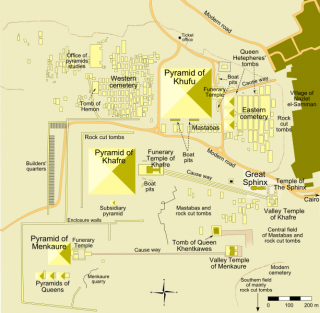
In the aftermath of the geological survey, West suggested that for the sake of preserving the “accepted chronology of the evolution of human civilization,” Gauri was ignoring his own evidence.
According to calculations made by Lehner and published with the survey, using the orthodox timeframe, there was only a five hundred year window in which the erosion could have taken place. That leaves nowhere near enough time for salt damage to have caused the two-foot deep vertical gullies seen on the Sphinx enclosures walls.
West went on to accuse Gauri of inventing a fictional process where, for five hundred years during and after the reign of Khafrep, water was magically pulled up to the Sphinx from fifty feet lower than its present subsurface level. And again, by magic it suddenly ceased four thousand years ago, even as the water table has continuously risen since then.[22]
West, without a doctorate, publicly was ignored; but by 1986, Gauri had revised his wicking process in favor of the desert’s evening dew. He would clarify his salt “exfoliation” theory, embraced by academia to this day, by saying “the source of this water is the atmosphere, and not the subsurface, because the water table lies many meters below the surfaces under consideration.
Therefore, during the long burial of the Sphinx, the rock must have become wet to a considerable depth, and as it dried when exposed to the sun, the salts must have become concentrated in the surface layers.”[23]
Exasperated, in 1989 West introduced Dr. Robert M. Schoch to the fray. Schoch, a Yale educated geologist with an impressive list of credentials, made his first scientific expedition to the Giza plateau in 1990. Over the next ten years he would make several more.
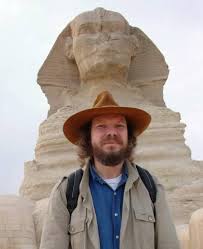
Schoch found no other reason to believe that the undulating vertical profile seen on the Sphinx and the walls of its enclosure, prominent vertical crevices that follow joints and faults in the bedrock, as well as cross cutting diffusion fronts, all telltale signs of water runoff, are anything other than just what they appear to be; water off.
Since the erosion also occurs on the back of the Sphinx the water runoff would have to have been caused by rainfall. The most recent sustained rainfall on the Giza plateau where that kind of erosion could have occurred was during the “Nabtian Pluvial;” a period of relatively heavy precipitation that occurred in Egypt from about 10,000 BCE to 3,000 BCE.
In the spring of 1991, with permission of the Egyptian Antiquities Organization, Schoch and Dr. Thomas L. Dobecki, a seismologist, took low-energy seismic refraction readings of the Sphinx enclosures floor. They were determining subsurface water penetration.
According to Gauri’s own classification system for the various hardness levels in the strata of the limestone the entire floor of the enclosure is the same hardness level; Rosetau Member or Member I. Yet Schoch and Dobecki’s seismic refraction readings showed water penetrating into the floor of the enclosure at a depth of six to eight feet around the head and sides of the Sphinx and only four feet around the rump on the western side of its enclosure.
The south wall of the enclosure runs in a straight line along the causeway but where it abuts the western wall there is another tier about eleven and half feet up from the floor of the enclosure. Schoch admits that they ran the line for their readings close to the lower wall and says he would like to take more readings closer to the rear of the Sphinx. But according to the data they collected the rear portion of the Sphinx must have been carved much later than the front portion.
Water penetration rate is non-linear, the deeper the penetration into the rock the greater the insulation from the exterior of the rock. Accordingly Schoch speculates that during renovations by Khafre in 2,500 BCE, the narrow western end of the enclosure was widened or the lower rump of the Sphinx was carved from the bedrock which had been left intact to serve as a pedestal for the original statue. Schoch calculated by the extra water penetration in front that, if Khafre was responsible for the renovations to its rear, the original Sphinx was at very least seven thousand years old, perhaps much older.
Schoch notes that the vast majority of the weathering and erosion occurred to the Sphinx prior to 1400 BCE when repairs were made during the New Kingdom. He quotes Lehner, chiding him for his willingness to ignore his own data. “To seek agreement with known historical facts we should probably expect the earliest restoration to have been done in the New Kingdom.”
He scoffs at the notion that the three to over six feet of erosion exhibited by the enclosure walls, within the nine hundred year span between Khafre’s alleged construction of the Sphinx and the New Kingdom, buried in sand for half that time, could be due to migrating salts.
He points out that structures on the Giza Plateau immediately to the south of the Sphinx, carved from the same limestone and at the same elevation or lower, do not exhibit the extreme weathering patterns the Sphinx does. Nor do they exhibit any sign of Gauri’s “capillary weathering.”
Schoch maintains that weathering from salt exfoliation can be seen in various structures carved into the bedrock at Giza, particularly on tombs directly north of the Sphinx. It leaves the unmistakable “appearance of slightly melted wax, at times covered with a very fine coat of mineral crystals.”
He calls “the dissolution and recrystallization of calcite” and the “efflorescing of dissolved and recrystallized minerals” the “most minor component of weathering observed on the Giza Plateau.” Schoch feels they only recently made relevant by the construction of the Aswan Dam. The dam prevents the natural and ebb and flow of the Nile from flushing the rocks clean of salt drastically accelerating its corrosive effects.
Added to the detrimental effects of the dam are the rapid industrialization of Cairo, air pollution, acid rain, rising water tables due to encroaching settlement, tourism, and automobile and bus traffic, all making it impossible to extrapolate the present rate of the Sphinx’s deterioration into the past. Schoch points out that “Gauri has documented the modern deterioration, as opposed to ancient weathering, of the Sphinx.” He cites a previous publication by Gauri from 1981 that illustrates, using comparative photographs from 1925-26 and 1980-81, just how rapid the deterioration of the sphinx has been over the last few decades.[24]
The Sphinx Temple, and possibly the core of the Valley Temple, were constructed with the same titanic limestone blocks that were quarried from the Sphinx enclosure. Later, perhaps thousands of years later, the temples were encased in Aswan granite which can be dated by inscriptions on it to at least the fourth dynasty.
Based on his observations of both the limestone and the granite blocks still left on the site, Schoch postulates that the Valley Temple was partially reconstructed in dynastic times. He notes that the limestone core of the temples exhibits the same telltale signs of precipitation induced weathering as the Sphinx and its enclosure.
He also notes that the backs of the granite casing stones were cut in an undulating pattern mimicking the weathered limestone in order to fit flush against it. He concludes that the weathering on the limestone was already there for a long time before the limestone was covered with granite. The implications being that the original Sphinx temples are of predynastic origins just like the Sphinx itself.[25]
In 1993, perhaps trying to atone for all the damage he had done with his Hollywood hero portrayal of the legendary Old Testament thug; Moses, Charlton Heston narrated a documentary titled Mystery of the Sphinx. The Emmy award winning film aired on NBC television to massive audiences. It highlighted some of the discrepancies Egyptology has with hard science. As the Chief Inspector of the Giza Pyramid Plateau, Zahi Hawass would later remark “If geologists prove what Schoch is saying, still in my opinion, as an Egyptologist, the date of the Sphinx is clear to us.”[26]
Hawass had already assumed his dictatorial powers over Giza when in March of that very same year he would be relieved of his title by the President of the EAO; Dr Muhammad Bakr, ostensibly Hawass’s boss. A priceless statue had disappeared while in the custody of Hawass. No worries though. Bakr would be fired in June under allegations against him of malpractice and fraud.
He muttered to anyone listening about a “mafia” which had controlled the Giza plateau for “the last twenty years.” Probably wisely Bakr refused to give names. He maintained “I wanted the whole matter investigated by the prosecution authorities, but my request was refused.”[27]
By early 1994, Hawass would have both his title and his power back. The Egyptian Antiquities Organization (EAO) would be revamped into the Supreme Council of Antiquities (SCA) and henceforth, according to Wikipedia “Foreign archaeologists working in Egypt were required to report all discoveries and finds to the SCA before publication.”
That now had to be very clear because in the vacuum created by the temporary removal of Hawass, German Engineer Rudolf Gantenbrink had committed the ultimate blasphemy. He had bypassed Egyptology’s bureaucracy and went directly to the public with his discovery.
In 1991 Gantenbrink, one of those engineering prodigy’s that Germany seems to produce on an assembly line, agreed to embark on a joint venture to explore the shafts of the Great Pyramid with Dr. Rainer Stadelmann; Director of the German Archeological Institute (GAI) in Cairo. Robots would be used and constructed by Gantenbrink specifically for that purpose.
There are four narrow shafts found in no other pyramids but the Great Pyramid. Two, discussed in literature since the early seventeenth century, extend upwards from the Kings Chamber and exit the pyramid on the south and north side.
The southern shaft rises at an angle of about 45 degrees, is about a hundred and seventy-five feet long and narrows to eight inches wide and twelve inches high for most of that way. The northern shaft meanders up at an angle of about thirty-one degrees, is two hundred and thirty-five feet long, seven inches wide and five inches high.[28]
The shafts in the “Queens Chamber;” located below and slightly to the north of the Kings chamber, were walled up since time out of mind. They were only discovered in 1872 when a crack was noticed in the southern wall by British engineer Waynman Dixon and Dr. James Grant, known in Egypt as Grant Bey.
The title of Bey was the Khedive’s equivalent to knighthood. Grant Bey was the son of a Scottish banker and a close personnel friend of Sir Petrie. Grant and Dixon were checking on some measurements in the Great Pyramid at the behest of the brilliant Scottish astronomer Charles Piazzi Smyth. Smyth was most famous for his theory that the Great Pyramid was built by the Israelites, whom were in reality the Hyskos, on the instruction of god through the Melkizedik.
Both Smyth and Petrie were prominent academic proponents of British Israelism; a belief that the British are the lineal descendents of the Israelites and that the throne of England can be traced back to the House of David.
According to the account given by Smyth, a void was detected when a wire was pushed through the crack to what he called an “unconscionable depth.” When a hole was chiseled out of the crack, an eight by eight and a half inch channel was revealed. It led seven feet straight into the pyramid, before inclining at an average angle of a little less than forty degrees up to unknown depths. Aware of the two shafts in the Kings Chamber, Dixon calculated the corresponding position on the northern wall of the Queens chamber where the other shaft might be. After a minimal amount of chiseling, he found it.
Fires were lit inside the shafts to see where the smoke went. It stagnated in the northern shaft, but it disappeared into the southern shaft. No smoke was observed outside the pyramid. A granite sphere, a chunk of wood and a piece of copper referred to as a grappling hook by academia were recovered from the shafts but no one specified which shaft.
The artifacts were brought back to England and given to Smyth by John Dixon, Waynman’s brother. Smyth dutifully described them in his diaries, and then they promptly disappeared, until 1993, when Bauval with the help of Dr. Mary Bruck traced them to the British Museum depository; minus, of course, the chunk of wood which could be carbon dated.
The wood was described in the British Press at the time of its discovery by Henry Williams Chrisholm; England’s Warden of the Standards. “The fragment of the cedar rod is 5 inches in length, with rectangular section of 0.5 inch by 0.4 inch. Its sides are not accurately planed, and they bear parallel lines like file marks. It may possibly have formed part of a measure length.”[29]
In his first attempt in March of 1992, due to various glitches, Gantenbrink found that his camera-equipped robot could not pass through any of the four shafts. He did, however, manage to get the robot almost forty feet into the shafts of the Queens Chamber, disproving the academic assertion that those shafts are just a few feet long and acted only symbolically as escape routes for the ‘pharaoh’s’ soul.
The other three shafts would eventually yield their secrets to late twentieth century technology, but the northern shaft of the Queens Chamber veers westward at a forty five degree angle that would prove to be too sharp for any of Gantenbrink’s robots to negotiate. The robot camera revealed the threaded end of a hexagonal iron rod that is jammed into the bend. The rod can only be part of the tool Dixon used to pry loose the artifacts now in the British Museum.
A second attempt was made in May with a new robot. While Hawass reluctantly closed the pyramid for a week losing the tourism revenue the Germans installed a ventilation system. Work on the outlet of the northern shaft of the Kings Chamber was performed at over two hundred and fifty feet directly above the main entrance to the pyramid. With the installation completed and running at 30% capacity, the system reduced the humidity inside the pyramid to the same as that outside of it, a huge benefit for the preservation of the iconic edifice.
Later in the same expedition, Gantenbrink finally managed to push a robotic camera through the shafts in the Kings Chamber, producing a video recording of their interior and allowing the human race to see a cross sectional view of the Great Pyramid for the first time in recorded history. Before his victorious departure from Egypt, a scheduled last day press conference where Gantenbrink could take a bow for his achievements was canceled without explanation.
Gantenbrink’s third attempt to find the destination of the shafts in the Queens Chamber took place in March of 1993 with the less than enthusiastic support of the GAI and Stadelmann. The GAI had none of the paperwork ready, and Stadelmann would drop by the operation only once. He would eventually pull the GAI photogrammeter Ulrich Kapp from the expedition.
Gantenbrink refers to Kapp as his “most important companion on all three campaigns.” Gantenbrink was treated no better by the Egyptians. In spite of all his accomplishments for both science and Egypt, Hawass warned him that his paperwork was not in order before even allowing him to proceed.
On March 20, Hawass “resigned.” On March 22, and after numerous engineering adjustments to his newest robot, improvised on site by Gantenbrink, the robot’s path was blocked by an ornate slab of limestone, 188-feet into the southern shaft of the Queens Chamber. The slab had two corroded copper fittings side by side, as if once providing some kind of handle for a tiny door.
As the camera panned in on what looked to be a round white chalk mark over each of the completely rusted fittings, Gantenbrink describes the Inspector for the EAO as turning chalk white himself and shouting “these are seals, these are seals!” He then exclaimed, visibly shaken, “we must stop work immediately and inform our chairman.”[30]
Work was halted. Over the next few days Stadelmann haggled with Gantenbrink over what would be said in the press release. Stadelmann finally insisted that there should be no press release, at least until May and probably not till the next expedition.
Disgusted Gantenbrink resigned from his “joint project” with the GAI and went back to Germany.[31] In April, news of his discovery was leaked to the British press. Gantenbrink was banned from the Giza plateau by the EAO and publicly denounced for the press release by Stadelmann.
Gantenbrink would never again be allowed in the Great Pyramid, and even his offer to train their technicians and let them use his robots was rejected by the Egyptians, who maintained his discovery was nothing. Bakr actually called it a “hoax” saying “the orifice of the shaft is too small for the robot to go through.” After redefining the nature of the orifice and shaft for Bakr the resurrected Hawass said “I do not think this is a door, and there is nothing behind it.”
By 1996, Hawass would be shamelessly promoting a “mission” by the Amtex Corporation of Canada to open “the door.” While soliciting the ten million dollars necessary for the venture, Amtex president Peter Zuuring was telling investors that he was working with a “personal friend of Hawass.” Zuuring was telling people “whatever the event we are going to stage, it will be televised live.”[32]
Lost in the hoopla over the door are the pictures that Gantenbrink’s robot took of what looks to be a builder’s line painted in the space where blocks 16 and 17 of the lower southern shaft are slightly offset. Block 26 of the same shaft shows a cutting grove, and blocks 8 and 9 were set unfinished. Other engineering mistakes in the pyramid’s construction show up in the crosscut sectional views provided from inside the shafts.
There can no longer be any question that the Great Pyramid was built by corporeal and fallible entities. Only what entities, why and when? In all likelihood Gantenbrink found the answer to the latter question in the lower northern shaft, and it was the real reason that he became anathema in Egypt.
There is another rod at the bend of the northern shaft in the Queens Chamber. It is underneath the north end of Dixon’s hexagonal iron rod. Its fractured end extends out from the inaccessible part of the shaft. When Gantenbrink tried to push his robot around the sharp turn, he couldn’t, but he did get pictures of the unidentified rod extending well into the shaft where the robots couldn’t go. In those pictures, there appears to be the blurry image at the far end of the unidentified rod. In Gantenbrink’s own words “at its end, there is what seems to be a rectangular structure. Unfortunately, it is so far from the camera that, at this resolution, no further details can be clearly perceived.”
But the pictures he took of the other end were much better. In clear resolution protruding from the bend in the shaft Gantenbrink captured on film what appears to be a “cedar rod,” with a height and width of about “0.5 inch by 0.4 inch.” Its end is clearly fractured. No doubt broken off by Dixon, who mentions in his notes about a “bit of wood, broken off from a larger part, measuring 5 inches, nearby, + accidental fractured end …” He also notes that the grappling hook was “once riveted on to a wooden handle.”[33]
Dixon recovered the artifacts by poking at the shaft with his sectioned hexagonal iron rod. He doesn’t say so outright because, although looting Egypt was still encouraged and supported, by 1872 it would have been jolly bad form to boast about it. Posterity now only knows for sure because they jammed there, no doubt, 1872 secret state-of-the-art technology custom-made iron rod into the bend and couldn’t get it out. Perhaps it was the curse of the Pharaohs that was just a little too strong for the empire’s Magick tricks.
The wood and the grappling hook were broken off from an ancient wooden rod that should still be in the shaft, waiting to be carbon dated. In the lower northern shaft of the Great Pyramid lay the long sought answer to exactly when it was built. But just as with the actual date of the Sphinx’s construction, Hawass was having none of it. Egyptology is having none of it. The empire is not amused.
In 1998, Hawass was given a new title, Director of the Giza Plateau. The now modified and improved ‘Director’ would close the Great Pyramid down in April. According to Hawass, the humidity levels in it were still too high, and a new ventilation system, which would be donated this time by a French company, was required. Other reasons given for closing the pyramid were to remove graffiti left inside by visitors; clean the salt residue left from human perspiration; clean the walls of the first and second chamber; and, repair cracks to the wall of the Great Chamber.[34]
Many feel Hawass may have interpreted his mission statement to clean up the graffiti too broadly. Seems Vyse never really did get it right, at least in his notes. For his hieroglyphic representation of the Kh in Khufu’s cartouche Vyse has a circle around a badly smudged ink blotch. It should be a circle around three crossbars.
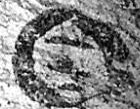
In Campbell’s Chamber, it’s now indeed three crossbars, but the lumpy horizontal lines look like they may have been doctored with a chisel and paint brush out of something similar to the ink blotch in Vyse’s notes.
They certainly aren’t the three clean horizontal lines that Hawass shows in his depiction of Khufu’s cartouche on his web site.[35]
In 2002, Hawass was appointed Secretary General of the SCA. By the end of the year he would finally be ready to stage the media event he and his business partners had been promising the world since 1996.
National Geographic (“Nat-Geo”) would supply the robot, basically a knockoff of Gantenbrink’s with the addition of impact-echo analysis capabilities to see how thick the “door” is, a drill to go through it and an extendable fiber optic camera to look inside.

Nat-Geo and FOX – TV would supply the airwaves. As over a billion people, a half billion in China alone, watched breathlessly, Hawass discovered that seven inches behind Gantenbrink’s door there is another blocking stone. It’s almost a shame Porky Pig isn’t under contract to Nat-Geo. He could have burst on to the television screen through the image of the blocking door and ended for Hawass by saying “Th-Th-Th-Th-Th-… That’s all, folks!”
But Hawass was only done for the cameras. A few days later, away from the world’s prying eyes, Hawass somehow managed to push a robot past Dixons rod and the angle that had stopped Gantenbrink in the lower northern shaft. After negotiating two more sharp angles where the builders maneuvered the shaft around the Grand Gallery, at a little over eighty-eight feet in, Hawass found his way blocked by two more metal rods. The rods look to be the same type as the one that was presumably used by Dixon and stuck in the first bend of the shaft.
Hawass also claims to have discovered a plain paper wrapper and a ticket to see the pyramids and Sphinx at sixty and sixty eight feet into the shaft. How those rods or any of the other objects got to where Hawass claims to have found them may be a greater mystery than even how the Pyramid was built. At 206-feet in, the intrepid Hawass and his suddenly unstoppable knockoff robot were finally halted for good. They had come to another blocking stone that was a replica of the one Gantenbrink had found a decade earlier in the lower southern chamber.[36]
Eventually, Hawass would deploy a more technically advanced robot, designed by Hong Kong dentist; Ng “TC” Tze Chuen, a man nobody ever heard of.
When the collage of pictures taken by the new robot of the seven inch wide and eight inch square compartment between the two blocking stones are assembled, they show a builder’s line resembling the one photographed by Gantenbrink between blocks 16 and 17 further back in the shaft. This one’s painted on the floor to the right of the hole drilled by the knockoff. On the floor above the line, between it and the right wall of the compartment, are three tiny paint smudges — each about a half inch square. Some Egyptologists are claiming, naturally, that it’s the numbers for one hundred and twenty one cubits; the overall length of the shaft, written in hieratic script of course.[37]
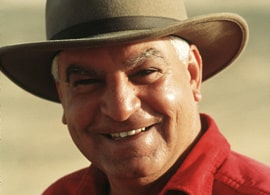
Hawass did have plans to drill through the door in the lower northern shaft, and possibly another international TV extravaganza but he was interrupted by Egypt’s January 2011 revolution which put an end to his antics, hopefully for good. Getting a piece of that wooden rod for carbon dating is the patent priority of any sane, if not even competent, scientist.
Hawass used a flimsy excuse to ignore it saying “some suggest that carbon dating the wood would allow accurate dating of the Pyramid because wood must have been left in the shaft when the Pyramid was constructed (given that the shaft was sealed), but I contend that this is not absolute. Wood may been placed in the shaft after construction via the shaft’s exit, if one exists.”[38]
Outside of what should be obvious to even the most stupefied Hawass sycophant: if the wood is carbon dated to be older than the Fourth Dynasty, then the entire pseudoscience of Egyptology is invalidated. There is also the inconvenient fact that there is no exit. If there is an exit only the builders have ever seen it, leastways if we are to believe Zahi Hawass.
*
Citations
[21] Gauri, K., 1984, Geologic study of the Sphinx. American Research Center in Egypt Newsletter, Number 127, pp. 24-43.
[22] West, John Anthony. “Appendix I: The Gauri/Lehner Survey.” Serpent In The Sky. Google Books, 1 Jan. 1993. Web. 1 Jan. 2015.
[23] Gauri, K. Lal, G. C. Holdren, and W. C. Vaughan, 1986, Cleaning Efflorescences from Masonry, in Cleaning Stone and Masonry (J. R. Clifton, ed.), American Society for Testing and Materials, Philadelphia, pp. 3-13.
[24] Gauri, K., and G. C. Holdren, 1981, Deterioration of the stone of the Great Sphinx. American Research Center in Egypt Newsletter, Number 114, pp. 35-47.
[25] Schoch, Dr. Robert M. “Geological Evidence Pertaining to the Age of the Great Sphinx.” The Official Website of Robert M. Schoch. Web. 2015.
[26] Milson, Peter (ed.), Age of the Sphinx: A Transcript of the program transmitted 27 November 1994, Broadcasting Support Services, London 1994, p 20.
[27] Hancock, Graham. “The “Door” in the Great Pyramid.” Information on the Great Pyramid and Sphinx. The Modern Riddle of the Sphinx. Web. 28 Apr. 2015.
[28] Orcutt, Larry. “The Great Pyramid’s ‘Air Shafts’” Catchpenny Mysteries Of Ancient Egypt Explained. 1 Jan. 2000. Web. 30 Apr. 2015.
[29] Bauval, Robert G. “Grant Bey and the Missing Pyramid Relic.” Carbon 14 Dating the Great Pyramid. (2002): n. page. Web. 5 May. 2015.
[30] Gantenbrink, Rudolph. “The Upuaut Project Official Web Site.” 1 Jan. 1999. Web. 2 May 2015.
[31] Ibid.
[32] Hancock, Graham. “The “Door” in the Great Pyramid.” Information on the Great Pyramid and Sphinx. The Modern Riddle of the Sphinx. Web. 28 Apr. 2015.
[33] Gantenbrink, Rudolph. “The Findings, the Lower Northern Shaft.” The Upuaut Project Official Web Site. (1999): n. page. Web. 6 May. 2015.
[34] Hawass, Zahi. “The Restoration of The Great Pyramid of Khufu.” n. page. Web. 8 May. 2015.
[35] “The Smoking Gun.” The Great Pyramid Forgery?. n. page. Web. 8 May. 2015.
[36] Sesen , Shemsu. “The Pyramid Shafts: From Dixon to Pyramid Rover.” Em Hotep. (2012): n. page. Web. 8 May. 2015.
[37] Sesen , Shemsu. “The Djedi Project: The Next Generation in Robotic Archaeology.” Em Hotep. . (2012): n. page. Web. 8 May. 2015.
[38] Hawass, Zahi. “The Secret Doors Inside the Great Pyramid.” n. page. Web. 10 May. 2015.
*
Related articles
*
*
*

Jack Heart, pen name for George Esposito, is known for his extensive research and writings that provide high-quality information and authentic alternatives to mainstream narratives on a wide variety of subjects. His life experiences make for a highly intriguing perspective.
ATTENTION READERS
We See The World From All Sides and Want YOU To Be Fully InformedIn fact, intentional disinformation is a disgraceful scourge in media today. So to assuage any possible errant incorrect information posted herein, we strongly encourage you to seek corroboration from other non-VT sources before forming an educated opinion.
About VT - Policies & Disclosures - Comment Policy

